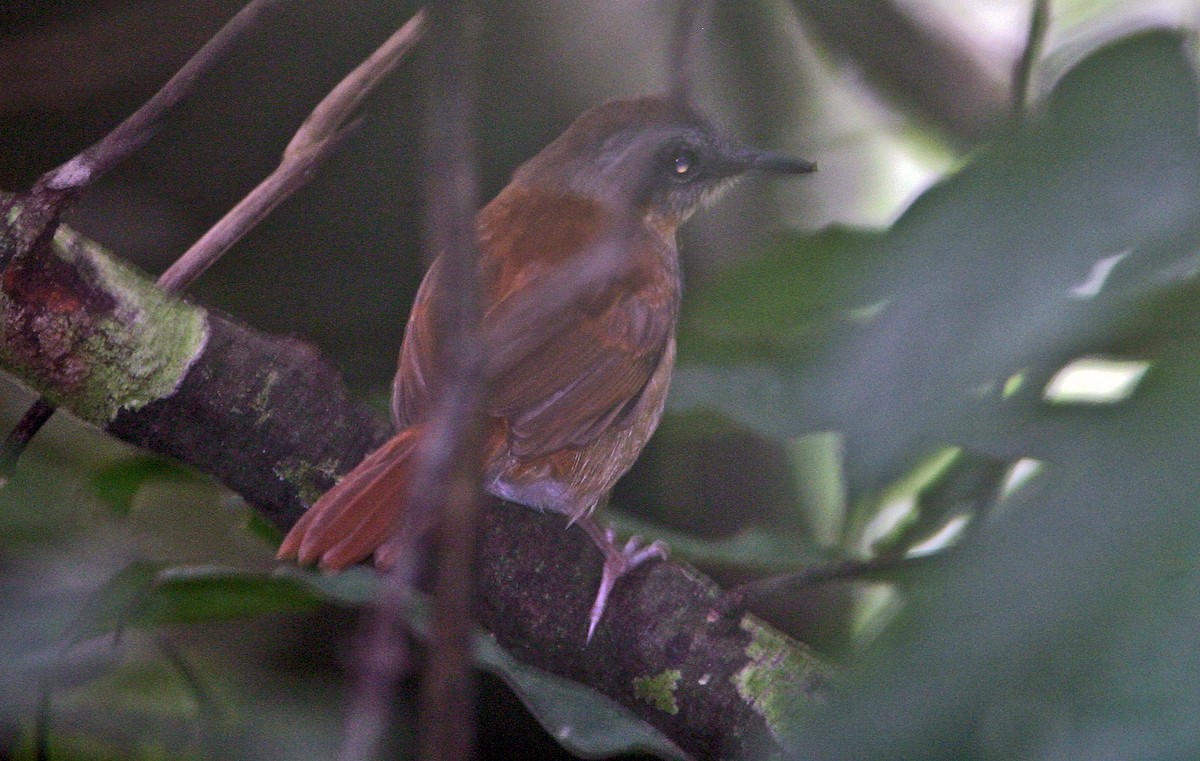White-bellied Antbird
A species of White-bellied Antbird Scientific name : Myrmeciza longipes Genus : White-bellied Antbird
White-bellied Antbird, A species of White-bellied Antbird
Botanical name: Myrmeciza longipes
Genus: White-bellied Antbird
Content
Description General Info
 Photo By Don Roberson
Photo By Don Roberson Description
This antbird, like others in its family, is a forest bird with a preference for undergrowth in dry or moist deciduous habitats. It is a resident breeder which lays two or three eggs in a nest in a tree, both sexes incubating. The white-bellied antbird is typically 15 cm long, and weighs 26 g. It has rufous brown upperparts and whitish underparts shading to cinnamon-buff on the flanks and lower belly. There is a long grey supercilium. The pink legs are long and strong, reflecting this bird's terrestrial lifestyle. The male has a black face, throat and upper breast. The female has a darker crown, grey cheek patches and small dark spots on the wings, and lacks the black markings of the male. The northern race griseopectus has black spots on the wings and grey central underparts in both sexes. The white-bellied antbird is an insectivore which feeds on ants and other arthropods at or near the ground; it sometimes follows columns of army ants. It may be located by its bright descending jeer-jeer-jeer-jeer-jeer-jeer-jeer-jeer-jeer-jeer-jeer-jeer song, which ends with a few chew notes. 
Size
16 cm
Nest Placement
Ground
Feeding Habits
White-bellied Antbird primarily consumes a variety of insects, including ants, spiders, and earwigs. Employing foraging and hunting techniques, this bird actively searches the forest floor. Notably, white-bellied Antbird exhibits a specialization in ant consumption, revealing unique dietary preferences and adaptations among its feeding habits.
Habitat
White-bellied Antbird typically inhabits the ground layer and understory of tropical lowland environments. Preferring drier and semi-deciduous forests over extensive lowland humid forests, white-bellied Antbird has also adapted to reside in fragmented humid forest regions. This species is more frequently associated with semi-deciduous habitats than other antbirds, which further distinguishes its habitat preferences across broad tropical regions.
Dite type
Insectivorous
General Info
Feeding Habits
Bird food type

 Photo By Don Roberson
Photo By Don Roberson Scientific Classification
Phylum
Chordates Class
Birds Order
Perching birds Family
Antbirds Genus
White-bellied Antbird Species
White-bellied Antbird